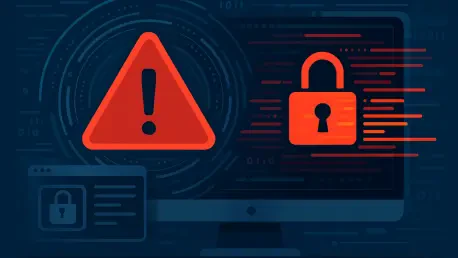In a shocking turn of events on November 10, a major cybersecurity breach exposed a critical flaw in New York’s official alert system, managed by Mobile Commons, a mass text messaging provider, shaking public confidence in a platform designed for safety. Nearly 200,000 individuals received fraudulent messages during this incident, highlighting the vulnerability of even regulated systems to cyber threats and bringing to light the sophisticated tactics employed by modern hackers. As digital infrastructure becomes increasingly integral to public services, such breaches serve as a stark reminder of the persistent dangers lurking in the cyber realm. This article aims to unpack the specifics of how the breach unfolded, examine the vulnerabilities it exposed, and explore the broader implications for cybersecurity in government communication systems. By delving into the methods used and the response that followed, a clearer picture emerges of the challenges faced in safeguarding critical platforms against determined cybercriminals.
Unpacking the Cyberattack on Mobile Commons
A meticulously planned social engineering tactic, believed to be spear-phishing, enabled hackers to infiltrate Mobile Commons’ messaging platform, marking a significant breach of New York’s alert system. During a tense four-hour window, the attackers exploited a security gap created by deceiving an insider, sending out spam texts about a fictitious transaction accompanied by a toll-free number for further engagement. These fraudulent messages reached a diverse audience, including subscribers to state alerts, a charity organization, and a political group, demonstrating the extensive reach of the attack. The audacity of targeting such a wide net—nearly 200,000 individuals—underscores the potential for widespread harm. Although precise figures on how many recipients fell prey to the scam remain elusive, the incident highlights the effectiveness of psychological manipulation in bypassing technical safeguards, raising critical questions about the human element in cybersecurity protocols.
The aftermath of the breach revealed both the immediate response and lingering uncertainties surrounding its impact on the affected population. Mobile Commons acted swiftly once the malicious activity was detected, terminating the hackers’ access and issuing a follow-up message to flag the initial texts as spam. This rapid intervention likely curtailed some of the potential damage, preventing further exploitation during the critical window of exposure. However, the full scope of the fallout remains unclear, as there is no definitive data on how many individuals engaged with the fraudulent messages or suffered financial loss as a result. This lack of clarity points to a broader challenge in cybersecurity: assessing and mitigating harm after an attack. The incident serves as a potent example of how even brief access to a trusted system can have far-reaching consequences, emphasizing the need for robust monitoring and instantaneous response mechanisms to limit the damage caused by such breaches.
Exposing Flaws in Trusted Communication Platforms
Even as a state-approved provider equipped with access to white-label short code numbers, Mobile Commons was not impervious to this cyberattack, shattering the illusion of absolute security in regulated systems. The breach demonstrated that no platform, regardless of its credentials or oversight, is entirely safe from determined cybercriminals who exploit human vulnerabilities over technical ones. Unlike attacks aimed at data theft or causing public panic, this incident appeared to be driven by financial gain, with hackers focusing on deception for profit rather than broader disruption. Such motives are increasingly common among independent actors in the cybercrime landscape, where the allure of quick monetary returns often overshadows other objectives. This event acts as a sobering reminder that trust in a system’s credentials alone is insufficient to ward off threats that target the weakest link—human error or misplaced trust.
The rapid response from Mobile Commons, while commendable, also sheds light on the inherent limitations of damage control in the wake of a cyber breach. By cutting off the hackers’ access and alerting recipients to disregard the spam messages, the company took decisive steps to mitigate immediate risks. Yet, the uncertainty surrounding the number of individuals who may have interacted with the fraudulent texts highlights a critical gap in post-incident analysis. Without comprehensive data on victim impact, it becomes challenging to gauge the true extent of harm or to implement targeted recovery measures. This situation underscores the necessity for enhanced tracking and reporting mechanisms within alert systems to better understand and address the consequences of such attacks. Furthermore, it calls attention to the importance of preemptive training for personnel to recognize and resist social engineering tactics, which remain a potent tool for cybercriminals seeking unauthorized access.
Contextualizing Risks in Public Alert Systems
This breach in New York is not an isolated anomaly but rather a piece of a larger puzzle involving vulnerabilities in government mass communication systems across the nation. A parallel incident in California on Veterans Day, where ten million residents in the Greater Los Angeles Area received an unintended test alert due to human error, illustrates the spectrum of risks these platforms face. While the California event lacked malicious intent, it mirrors the New York hack in exposing how errors—whether accidental or exploited—can affect massive audiences. Both cases reveal the fragility of systems designed for public safety when confronted with either deliberate attacks or simple mistakes. As these platforms manage critical information flows, any disruption, intentional or not, can erode public trust and compromise safety, necessitating a reevaluation of how such systems are protected and operated.
The pervasive nature of cyber threats further compounds the challenges faced by mass communication infrastructures, with statistics showing that roughly three out of four Americans have encountered online spam or phishing attempts. This widespread exposure is fueled by the increasing availability of cybercrime tools, which empower even independent actors to orchestrate large-scale fraud. The New York incident exemplifies how hackers relentlessly probe for weaknesses in systems with broad reach, whether through legitimate text operators or other digital channels. Such persistence indicates that breaches of this nature, while still relatively rare in regulated alert systems, are likely to become more frequent as cybercriminals refine their tactics. This growing threat landscape demands a proactive approach to security, blending technological defenses with comprehensive awareness campaigns to educate users and operators alike on the risks of digital deception.
Future Steps to Bolster Cybersecurity Defenses
The sophistication and boldness displayed in the New York alert system breach reflect an alarming trend of escalating cyberattacks, often exploiting human vulnerabilities rather than purely technical ones. Social engineering, as seen in this incident, continues to be a formidable weapon, capable of undermining even the most fortified digital defenses by targeting trust and oversight lapses. This reality highlights a dual challenge: enhancing system security while simultaneously addressing the human factors that often serve as entry points for attackers. For organizations managing critical infrastructure, this means investing in advanced threat detection, regular audits, and employee training to recognize deceptive tactics. The incident serves as a clarion call for a multi-layered defense strategy that anticipates and counters the ingenuity of modern cybercriminals.
On an individual level, the breach underscores the importance of personal vigilance in an era of rampant digital fraud, offering a practical lesson for everyday users of technology. Employing top-tier antivirus software can provide a crucial line of defense, filtering out phishing attempts and spam that frequently infiltrate personal devices through text or email. Beyond software solutions, fostering a healthy skepticism toward unsolicited communications—especially those prompting urgent action or personal information disclosure—can significantly reduce susceptibility to scams. Meanwhile, the broader implications of this event point to a shared responsibility between system operators and users to fortify the digital ecosystem. Looking back, the response to the breach showed both resilience and gaps, paving the way for future improvements in how such incidents are prevented and managed to ensure the integrity of public communication channels.









